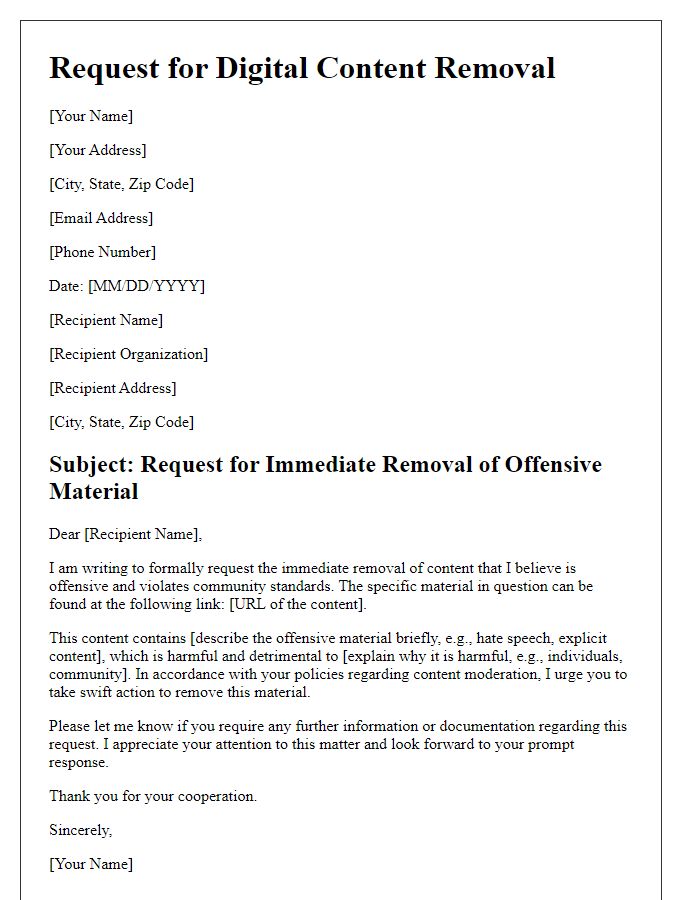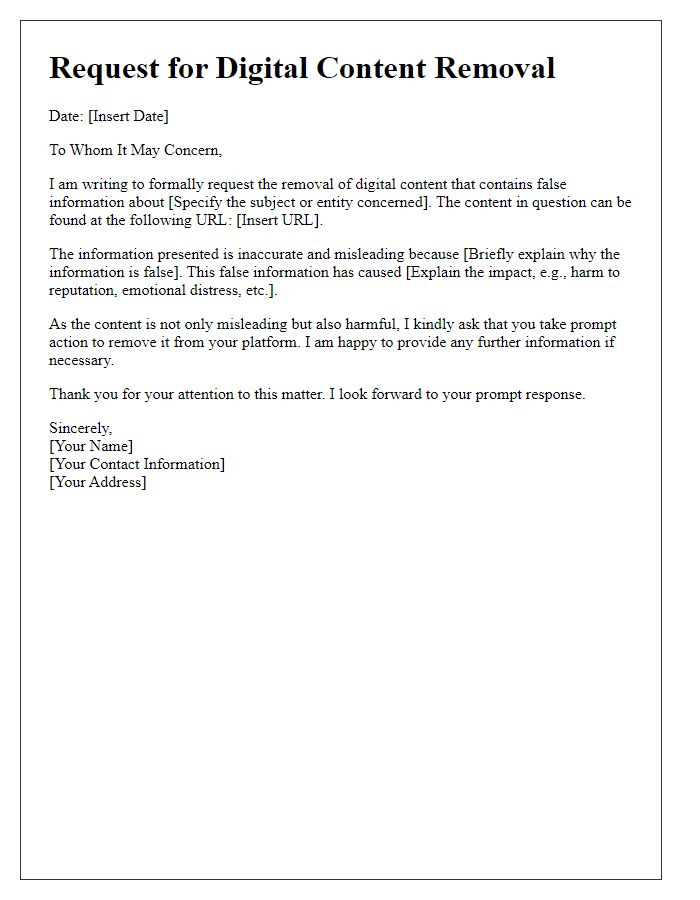Are you struggling to have unwanted digital content removed? Many people face challenges when attempting to erase their online presence, whether it's outdated information or harmful material. In this article, we'll walk you through an effective letter template specifically designed for making a digital content removal request. Dive in to discover how you can take control of your online reputation!

Apology and clarity of intent
A digital content removal request typically involves addressing sensitive issues related to the removal of certain online materials. When drafting such a request, it is crucial to apologize for any potential misunderstanding or discomfort caused by the content in question. Clarifying the intent behind the request can help alleviate any concerns and convey sincerity. In your communication, clearly outline specific details regarding the content, including URLs, publication dates, and the nature of the content that necessitates removal. Providing context and a genuine explanation for the request can lead to a more favorable response and demonstrate a commitment to resolve the issue responsibly.
Specific URL and content identification
Digital content removal requests are essential for addressing unauthorized or harmful material online. Specific URLs, such as https://www.example.com/sensitive-content, should be included for clarity. Content identification involves detailing the nature of the material, for instance, exposed personal information, defamation, or copyright infringement. Furthermore, supporting documentation, such as screenshots or legal notices, can enhance the credibility of the request. It is crucial to specify the desired outcome, whether it is complete removal or blocking access to the content. The importance of prompt action cannot be overstated, as lingering unwanted material may lead to reputational damage or privacy violations.
Legal grounds for the request
Digital content removal requests often rely on legal grounds such as copyright infringement, defamation, or privacy violations. Copyright infringement occurs when unauthorized use of protected content takes place, violating the Digital Millennium Copyright Act (DMCA) in the United States, which allows copyright holders to request removal. Defamation claims arise when false statements harm an individual's reputation, potentially violating local laws and regulations such as the Defamation Act in various jurisdictions. Privacy violations might involve the unauthorized sharing of personal information without consent, breaching laws like the General Data Protection Regulation (GDPR) in Europe. Each of these legal grounds establishes a basis for requesting removal of the content in question, emphasizing the need for compliance and protection of individual rights.
Impact or harm caused by the content
Digital content removal requests often arise due to various forms of harm or impact caused by the content in question. For instance, defamatory statements can damage reputations and lead to emotional distress for those targeted. Inaccurate portrayals of individuals, particularly public figures, can mislead audiences, resulting in a distorted public perception. Harassment through online platforms can escalate into severe psychological impacts, contributing to anxiety and depression for victims. Moreover, explicit or harmful content, particularly involving minors, can lead to significant legal consequences as well as potential criminal charges. Online misinformation can also result in public panic or misguided actions during critical events, such as health crises. In all these cases, the implications of retaining harmful digital content can extend beyond individual impact, affecting communities and societies at large.
Contact information for follow-up
When requesting the removal of digital content, providing clear and concise contact information is essential for facilitating follow-up communication. Include your full name, current address, and a phone number where you can be reached. An email address (such as a Gmail or Yahoo account) should also be provided for quick digital correspondence. Specify preferred contact methods for ease of interaction. If applicable, mention any relevant usernames or account handles associated with the content in question to assist in the identification process. Maintaining a professional tone ensures a respectful approach to the request.
Letter Template For Digital Content Removal Request Samples
Letter template of digital content removal for unauthorized use of images.

Letter template of digital content removal for personal information exposure.












Comments